Wingfoil tutorial: How to successfully foil 360 - technique and typical mistakes
Manuel Vogel
· 24.01.2025
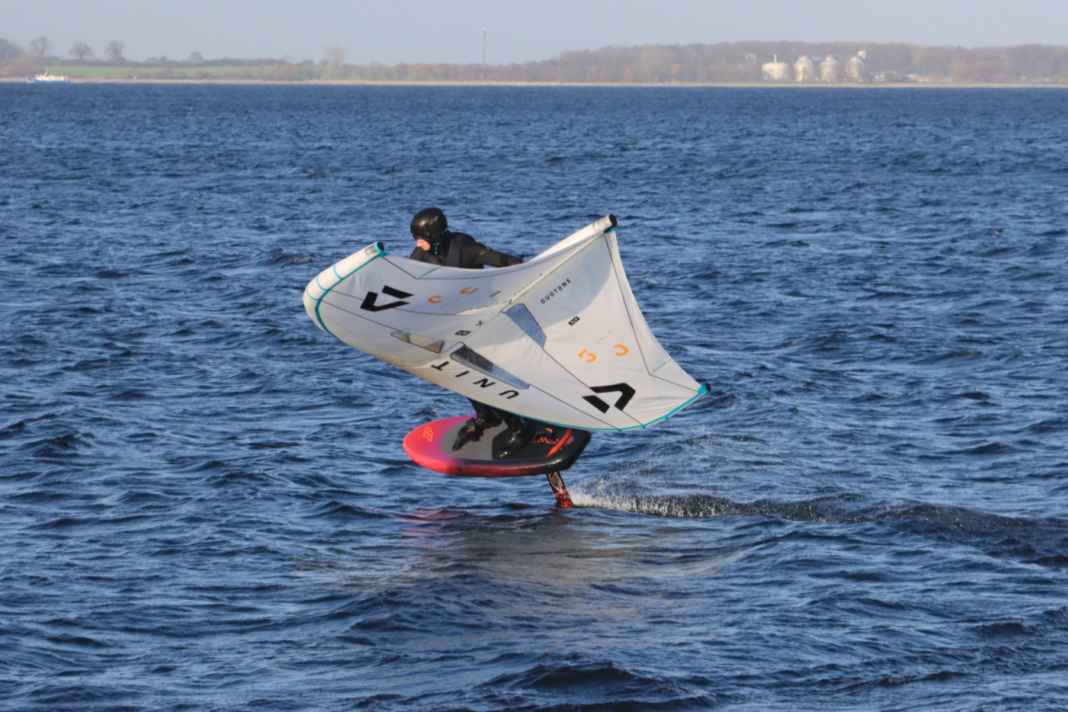





Once you've mastered the tack and jibe, the fun really begins, because in the world of wingfoiling there are countless manoeuvres that can be celebrated on the foil. In addition to the duck jibe (HERE is a tutorial) also includes the Foil-360 is a fun manoeuvre that is not that difficult to learn. We'll show you how to do it in this tutorial.
Foil-360 - the basics
The Foil-360 is, as the name suggests, a 360-degree curve. In contrast to the more demanding Upwind-360which is travelled upwind, the Foil-360 describes a turn to leeward. The move is characterised by a wide radius at the start, with the radius becoming increasingly tighter towards the end of the manoeuvre.
Prerequisites for practising
If you can jibe reasonably safely, you are basically ready for this trick. The only important thing is that you don't foil overpowered, because then it will be very difficult to control the back pressure during the backstroke - more on this in a moment. If in doubt, practise the move with a smaller wing or in light winds. You also need some space downwind at the spot, as the turn is usually like flying blind.
Foil-360 - the most important sticking points
You can click through step by step in the picture gallery at the beginning of the article. Here are the key points in more detail:
Phase 1: Introduction (0-90°)
Before you enter the bend, check that you have enough space around you so as not to endanger anyone. Initiate the turn by applying moderate pressure to the leeward edge. The aim is to carry as much speed as possible, which requires a large radius at the start of the manoeuvre.
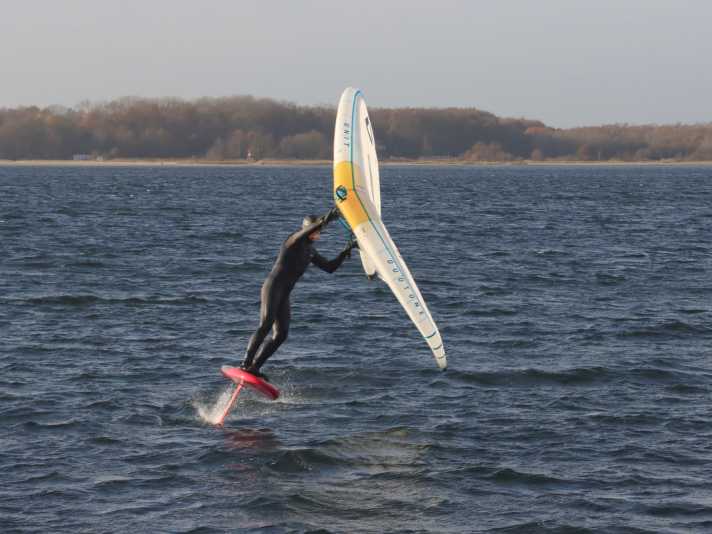
In contrast to the wingfoil jibe (HERE is a tutorial) the aim with the Foil-360 is to keep the pull in the wing at the start. Therefore, keep the back hand consistently tight.
Phase 2: Start of the baking journey (90-180°)
You have completed the first quarter on the downwind - but the move is only just beginning. At this point, the airstream and the actual wind almost neutralise each other - the wing is now light as a feather and neutral in your hands.
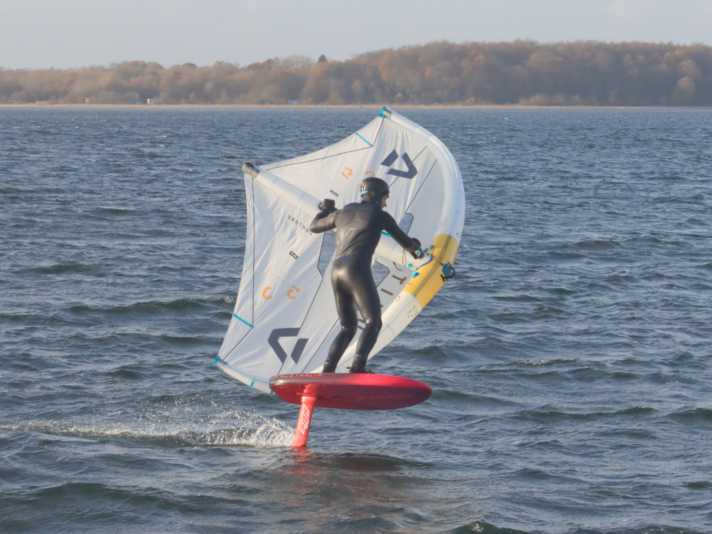
Now the Baking tripThis is the phase in which your wing is not providing traction, but is instead being pushed from the wrong side, i.e. building up counterpressure. Maintain the wide turn radius consistently.
Phase 3: Check back pressure during baking (180-270°)
The third phase of the manoeuvre is the most difficult, because the further your board turns upwind, the stronger the counter-pressure in the wing becomes. To prevent it from pushing you backwards off the board, you have to allow the wing to let off steam. Two things are important for this:
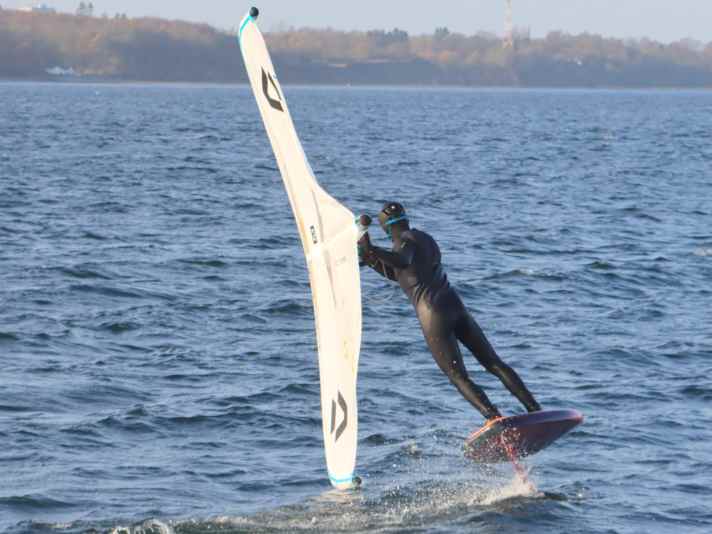
- Back hand remains passive: The wing can only open if you allow it to do so. Therefore, do not fight against the increasing back pressure with your back hand - the most common mistake when learning the Foil-360. Instead, concentrate on keeping the front tube at a distance with your front arm and leave your back hand passive.
- Move wing: You can open the wing better if you move it past your body towards the tail - this automatically reduces the back pressure
Phase 4: The last hook (270-360°)
In the final phase of the manoeuvre, the speed naturally drops further and further. Now it is time to end the backwards manoeuvre so that the wing is again being pulled in from the right side. Actively push the front tube of the wing towards the inside of the turn so that your wing is once again being pulled from the right side and pulls you through the last quarter of the manoeuvre. As with many manoeuvres, the same applies here: The wing sets the direction, the board follows automatically.
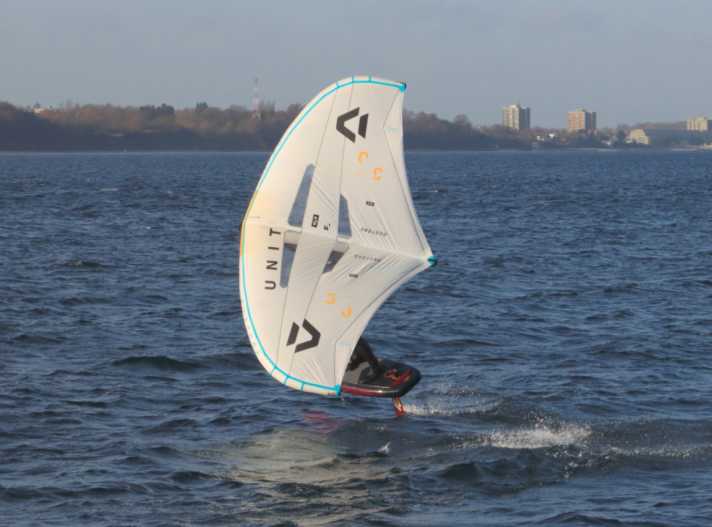
At the beginning, you won't be able to get through this last phase of the manoeuvre without the board coming into contact with the water, but with a bit of practice you'll soon be able to do completely foiled 360s.
